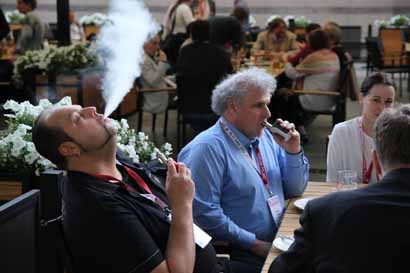This year’s GFN looked at past successes and continuing challenges for tobacco harm reduction.Read More
Tags :Global Forum on Nicotine
Tobacco harm reduction is gaining momentum but continues to face many hurdles.Read More
The WHO should study the examples of Norway and Sweden, says researcher. Read More
The Global Forum on Nicotine debates harm reduction in Liverpool and online.Read More
Participants tackle topics such as product regulation and scientific dissent.Read More
Tobacco harm reduction proponents from around the world convene in Liverpool.Read More
Participants in the annual forum can choose to attend on-site or online. Read More
Forum is free of charge and open to everyone with an interest in nicotine science and policy.Read More
Tobacco harm reduction took center stage at the recent Global Forum on Nicotine in Poland.Read More
The organizers of the annual Global Forum on Nicotine are scheduling three, thee-hour dialogues in the UK to help stimulate debate on nicotine and vaping.Read More









